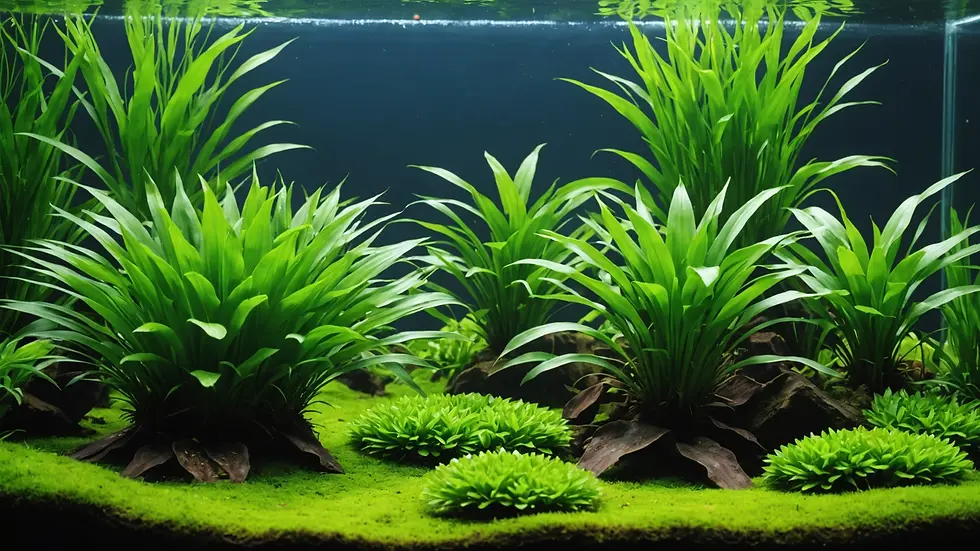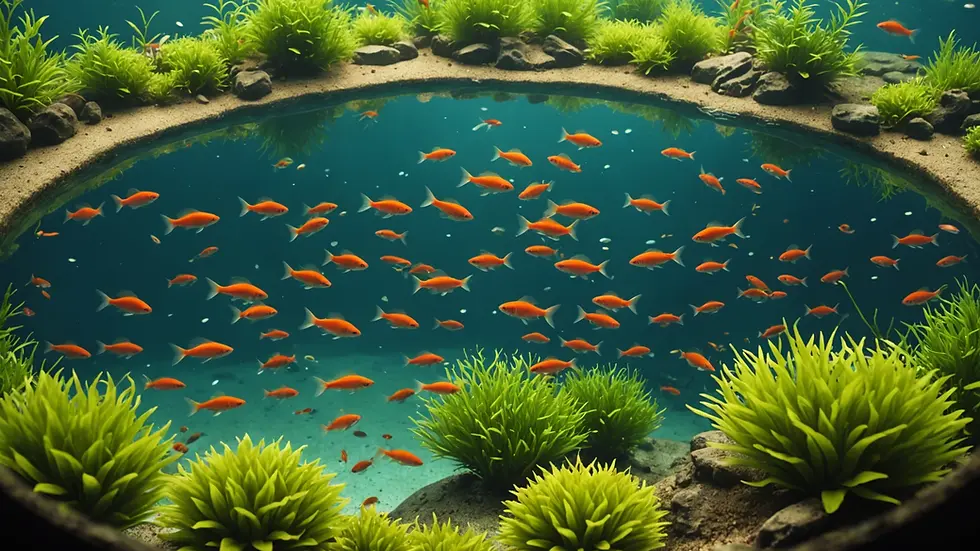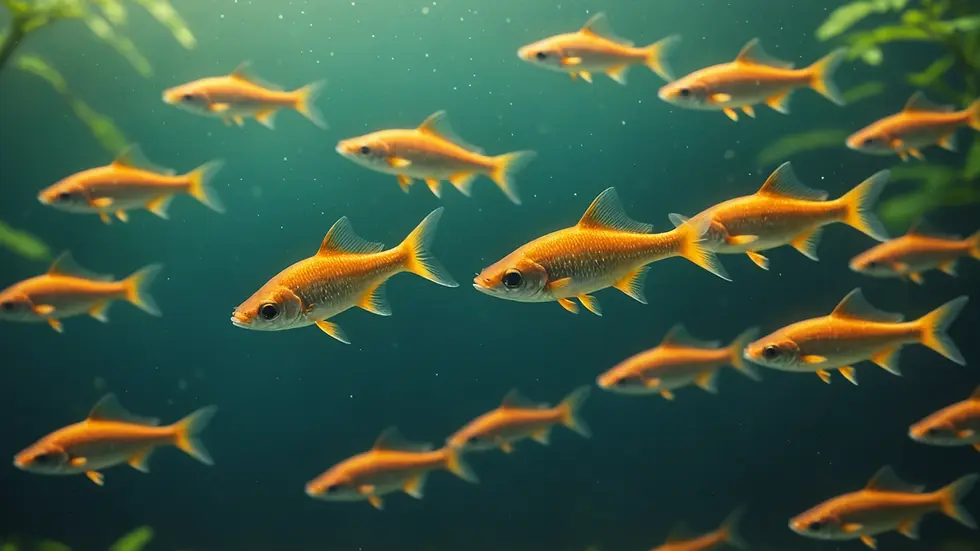What Are the Ideal Conditions for Rasbora Fish to School Together?
- Jyotiraj Borah
- Feb 9
- 4 min read
Rasbora fish captivate aquarists with their bright colors and lively behavior. To truly enjoy their stunning movements and social interactions, it's crucial to create the right environment that encourages them to school effectively. This guide explores the ideal conditions for Rasbora fish, focusing on tank setup, water parameters, and dietary needs—all essential for promoting harmony and natural schooling behavior.
Understanding Rasbora Fish
Rasbora fish are part of the Cyprinidae family, commonly found in the rivers and streams of Southeast Asia. These fish are small, typically measuring 1 to 4 inches in length. For instance, the Harlequin Rasbora, a popular species, showcases vibrant orange and black patterns.
Schooling is instinctual for Rasboras. When they swim together, they not only feel safer from predators but also demonstrate their natural behaviors. Recognizing this can help you create the best habitat for them.
The Importance of Schooling Behavior
The social nature of Rasbora fish significantly impacts their well-being. In a group, they exhibit increased confidence and thrive in their environment. A well-formed school can enhance your aquarium's visual appeal, with fish moving in beautiful, synchronized patterns.
Inadequate school sizes may cause stress and aggression among Rasboras, which can lead to health issues. Thus, creating ideal conditions for schooling is essential for their happiness and behavior.
Tank Size and Setup
Minimum Tank Size
One of the first steps is choosing the right tank size. A minimum of 20 gallons is advisable for a small school of Rasboras. This space allows them to swim comfortably, reducing stress and promoting natural behavior. In contrast, a cramped tank can lead to growth issues and anxiety.
Aquascaping for Rasbora Fish
The layout of the tank is just as important as its size. An aquascape that mimics their natural habitat—rich with plants, rocks, and hiding spots—creates a suitable environment. Incorporating live plants like Java ferns and Anubias can support aquatic life and improve water quality. Aim for open swimming areas interspersed with natural hiding spots, allowing for exploration and safety.

Water Parameters
Temperature
Rasbora fish flourish in a water temperature between 75°F and 82°F (24°C to 28°C). Regular monitoring helps avoid sudden fluctuations that could cause stress or health issues. Using a reliable heater can assist in maintaining a consistent temperature.
pH Level
For optimal health, keep the pH level between 6.5 and 7.5. Testing kits are easily available to monitor pH levels. Using buffers can stabilize these parameters, while a quality water conditioner can help maintain a balanced environment.
Hardness
Rasbora fish prefer moderately soft to moderately hard water, with ideal hardness between 2 and 15 dGH. Maintaining good filtration systems is essential, as these fish are sensitive to poor water quality. Regular water changes can also help maintain stability.
Dietary Needs
Balanced Diet
A varied diet is key to keeping Rasbora fish healthy and schooling well. Being omnivores, they benefit from high-quality flake foods, micro pellets, and occasional live or frozen foods, like brine shrimp and daphnia. These foods are rich in nutrients and promote growth.
Feeding Schedule
Feeding Rasboras 2 to 3 times a day with amounts they can consume in a few minutes is recommended. Overfeeding can degrade water quality, subsequently affecting their health and social behavior.
Introducing New Members to the School
Acclimation Process
When adding new Rasbora fish to an existing school, proper acclimation is vital. Start by floating the sealed bag in the tank for 15 to 20 minutes to adjust to the temperature. Gradually introducing small amounts of tank water into the bag helps them acclimate to pH and hardness levels.
Group Dynamics
Rasboras tend to accept newcomers, especially if added in groups. A ratio of 5-6 new fish is ideal for reducing stress and encouraging natural schooling behavior. It is essential to monitor their interactions initially to ensure compatibility and harmony.

Stress Factors
Overcrowding
Too many fish can lead to stress and aggression, disrupting the peace of the school. Strive for a balanced number of fish that allows for both social interaction and sufficient swimming space.
Tank Mates
Choosing compatible tank mates is critical. Pair Rasboras with similarly sized, peaceful fish to minimize stress. Avoid larger or aggressive species that might harass or pose a threat to the Rasboras' well-being.
Environmental Stability
Maintaining a stable environment minimizes stress levels. Regular maintenance, along with thorough monitoring of water quality—temperature and pH—ensures a comfortable habitat for your Rasbora fish.
Observing Schooling Behavior
Tank Lighting
The lighting inside the aquarium influences Rasbora behavior. Bright, even lighting encourages swimming activity, while shaded areas provide security. Striking a balance is key to a welcoming environment.
Observation Time
Taking time to observe your Rasbora fish is beneficial. Watch for their schooling formations, which reveal their happiness and health. This observation not only brings joy but also provides insights into their social dynamics.

Final Thoughts
Creating the right conditions for Rasbora fish to school together involves careful attention to several factors, including tank size, water parameters, and diet. By focusing on these elements, you enhance their quality of life and allow them to display their natural behaviors.
Investing the time and effort into establishing an optimal environment not only serves the fish's interests but also results in a stunning aquarium display. A joyful school of Rasbora fish can truly transform your tank into a lively, colorful ecosystem, rewarding your dedication with their beauty and dynamic movements.




Comentarios